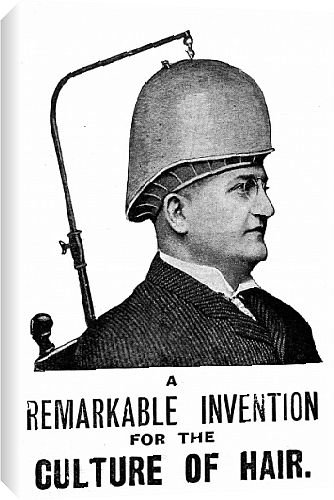One of the coolest ways to make a satisfying cup of coffee is to make it with a vacuum coffee maker. A what? Siphon brewer, siphon coffee, vacuum coffee pot, and vac brewer are just some of the names it comes by. Still sounds like an high-priced gizmo? Well, not quite. Read on to learn more!
This unique, two chambered coffee pot has been around since the 1800s, its invention credited to Loeff of Berlin in 1830. It was Madame Vassieux of Lyons, however, who produced the double globe fabricate in which the coffeemaker is ordinarily known today. The vacuum coffee maker arose from an obsolete confidence that it was unbecoming to boil coffee beans or grounds in boiling water. Recovery the tale on that interesting confidence for an additional one time, the vacuum coffee brewer gained considerable popularity in the first half of the 20th century.
Invention Of The Vacuum
Major brands then came out with their own versions of the apparatus that seemed more at home in a chemistry lab, faultless with a stand in some sets and its own burner. Normal Electric, Silex, Sunbeam, Cory, Bodum, Cona, and others burst into the coffee development arena with their own contraptions. However, all but the last two gradually eased out their products when the brewing recipe fell out of favor in the 1960s over the much more automatic percolators and drip systems. Nevertheless, Bodum has been consistent with its siphon coffee makers since the 70s, and Uk-based Cona has soldiered on since before World War Ii.
Canvas Prints of Evans Vacuum Cap advertisement, 1906 from Mary Evans Best
Rate This Product :

Canvas Prints of Evans Vacuum Cap advertisement, 1906 from Mary Evans Feature
- This 18x12 Canvas Print features an image chosen by Mary Evans. Estimated image size 457x305mm.
- White Sides Photo printed on archival quality canvas. Laminated. Canvas print stretched and hand mounted over thick 1 3/8 inch wooden bars. No frame, Gallery art appearance. Ready to hang
- Image Description: Advertisement for the Evans Vacuum Cap, an invention intented to promote the re-growth of hair, 1906.
- For any queries regarding this item please contact Mary Evans c/o Media Storehouse quoting Media Reference 4371778
- © Illustrated London News Ltd/Mary Evans
Canvas Prints of Evans Vacuum Cap advertisement, 1906 from Mary Evans Overview
18x12 Canvas Print, White Sides. , Evans Vacuum Cap advertisement, 1906. Advertisement for the Evans Vacuum Cap, an invention intented to promote the re-growth of hair, 1906. Chosen by Mary Evans. Photo printed on archival quality canvas. Laminated. Canvas print stretched and hand mounted over thick 1 3/8 inch wooden bars. No frame, Gallery art appearance. Ready to hang. This item is shipped from our American lab.Customer Reviews
*** Product Information and Prices Stored: Feb 24, 2012 00:35:00
While the vacuum coffee maker has never regained its early 20th-century grandeur, it gained resurgence in the 1990s, buoyed by hardcore coffee fans who wanted their brew tasty, the old-fashioned, manual way, or who naturally found sheer joy in watching the interesting process of coffee siphoning to and fro two vertically stacked carafes by sheer vapor pressure and vacuum. Now, the hardy vacuum coffee pots are seeing their way into the coffee shops in the 21st century. Coffee addicts may have to wait a bit to get their hands around a steaming cuppa in shops, but it just could be well worth the five itsybitsy or so wait!
Vacuum Coffee MakerInside Dyson : Part 1 Video Clips. Duration : 10.00 Mins.Inside Dyson : Part 1 - This video content was made from the James Dyson Foundation charity number 1099709, and was made for educational purposes. James attended London's Byam Shaw art school but painting beautiful objects wasn't enough. James wanted to make, and the Royal College of Art allowed just that. James studied architecture, but instead of colonnades and cladding, robust marine engineering was the order of the day. He developed a flat-hulled high-speed landing craft and, with it, his passion for engineering. Pretty soon, he'd also developed a new kind of wheelbarrow -- one with a big fat ball that didn't sink into mud and chunky feet for stability. All the while learning to take risks, make mistakes and use frustration as a fuel for creativity and solving problems. Problems like vacuum cleaners that lose suction. Could the cyclone technology he'd first spotted on a sawmill work in a vacuum cleaner? He ripped the dusty clogged bag from his old vacuum and replaced it with a crude prototype. 5126 prototypes later: Dual Cyclone™ technology and the first bagless vacuum cleaner. During the five years it took to develop his first vacuum, James was also battling. First to convince other manufacturers to embrace his new technology. Then to protect his invention when they copied it. It's enough to give you a complex. And it did. James' experience informs the way Dyson works today. Keeping our inventions secret. Protecting our ideas. Always taking risks. Like developing a ...
Keywords: james, dyson




No comments:
Post a Comment